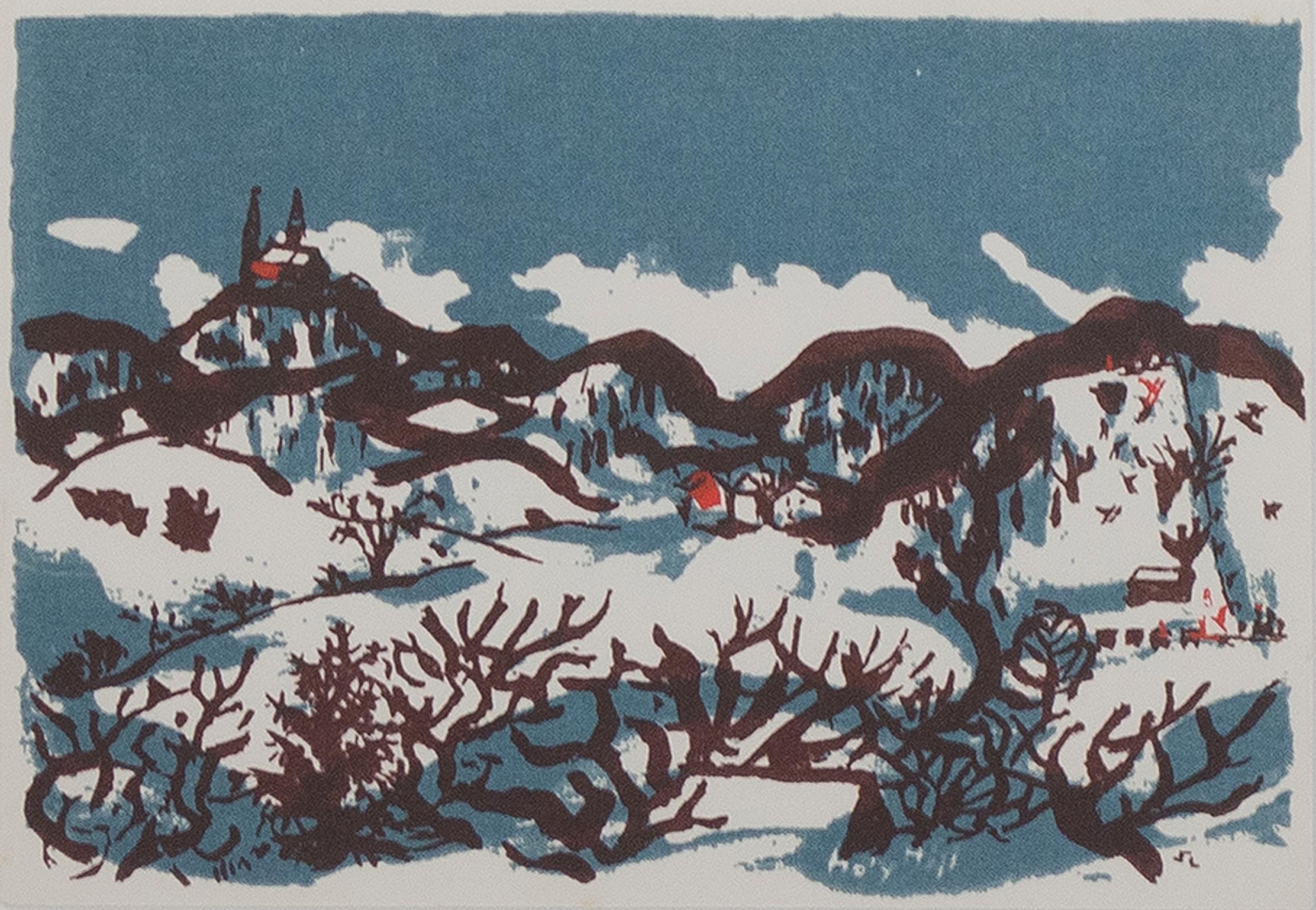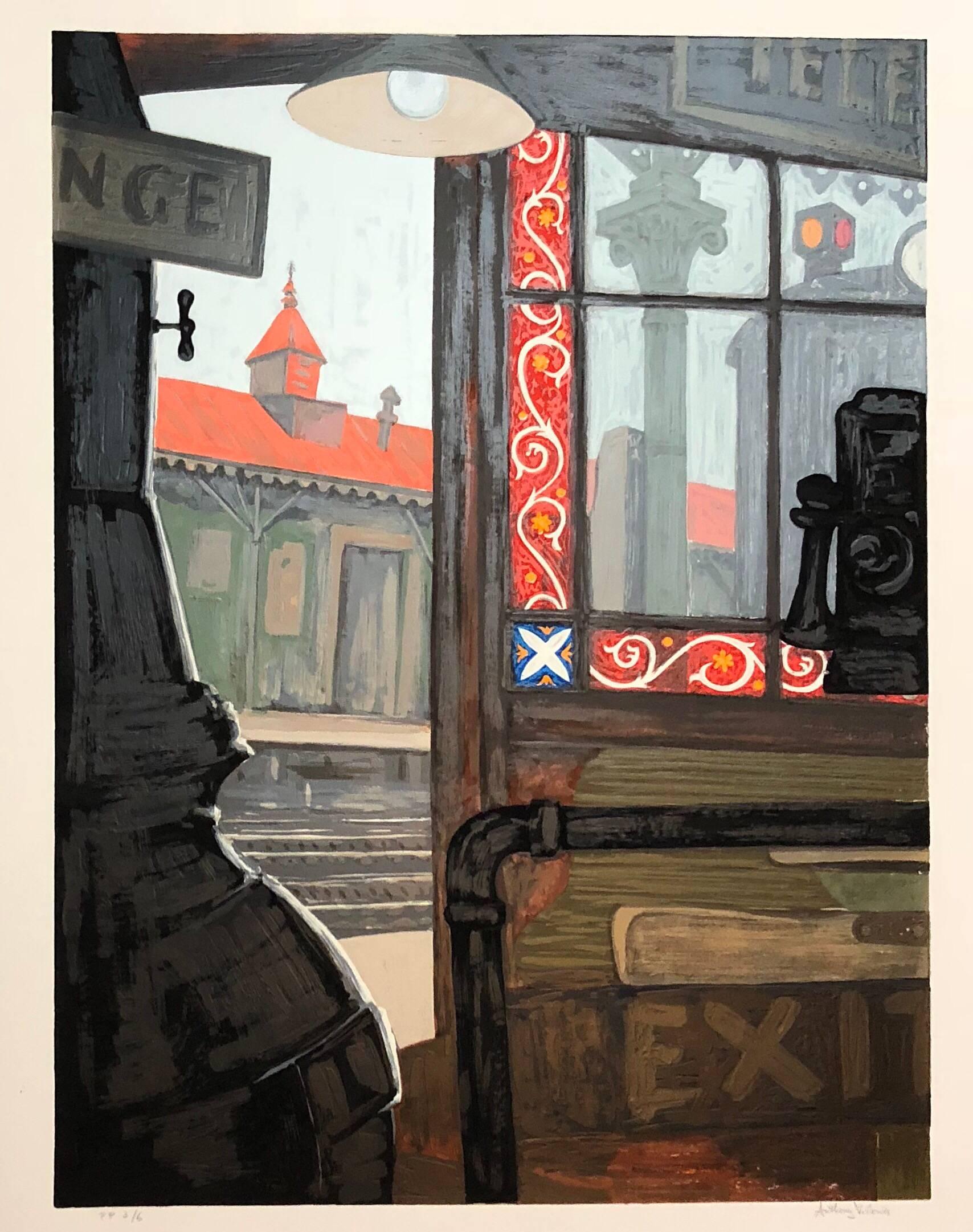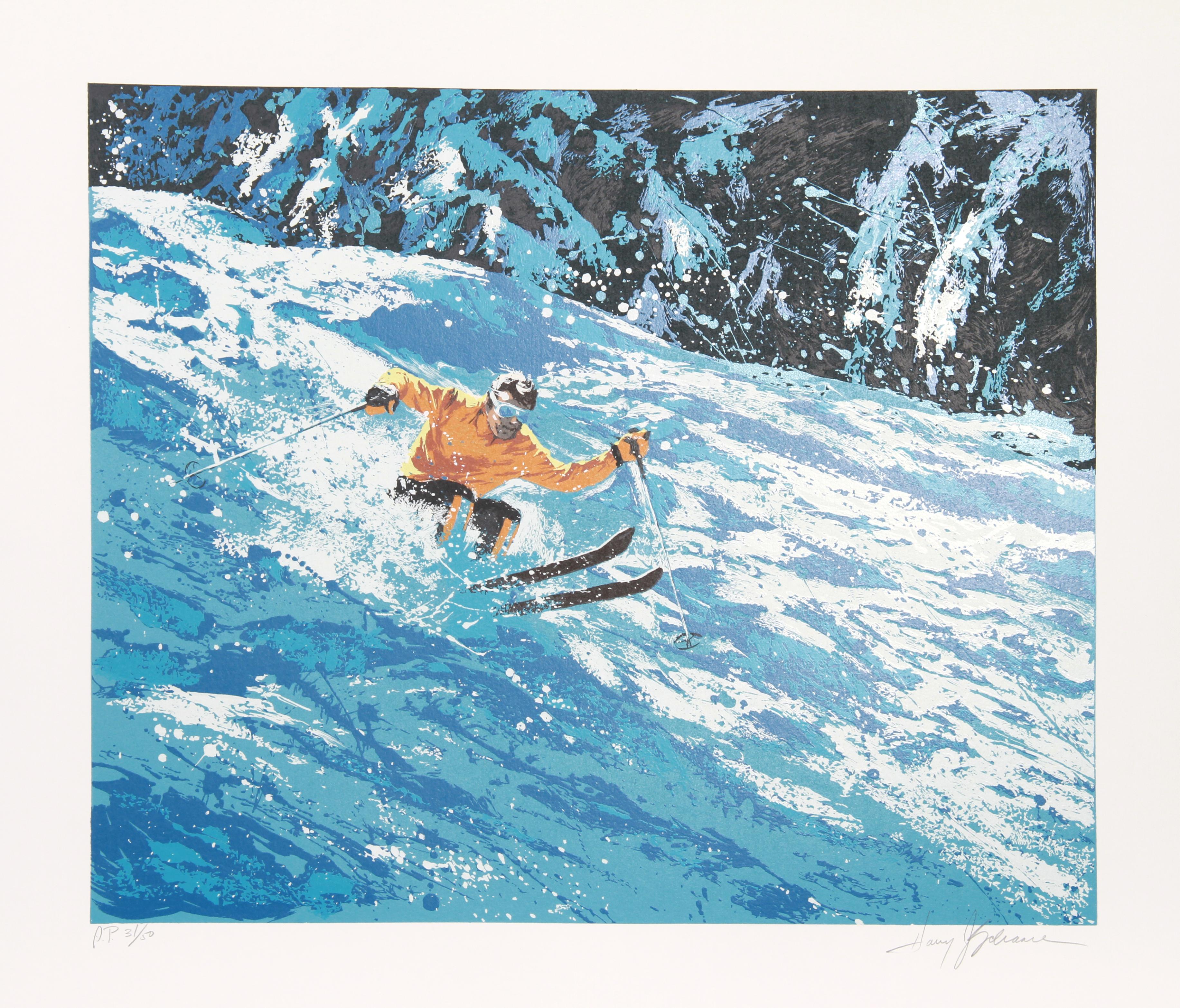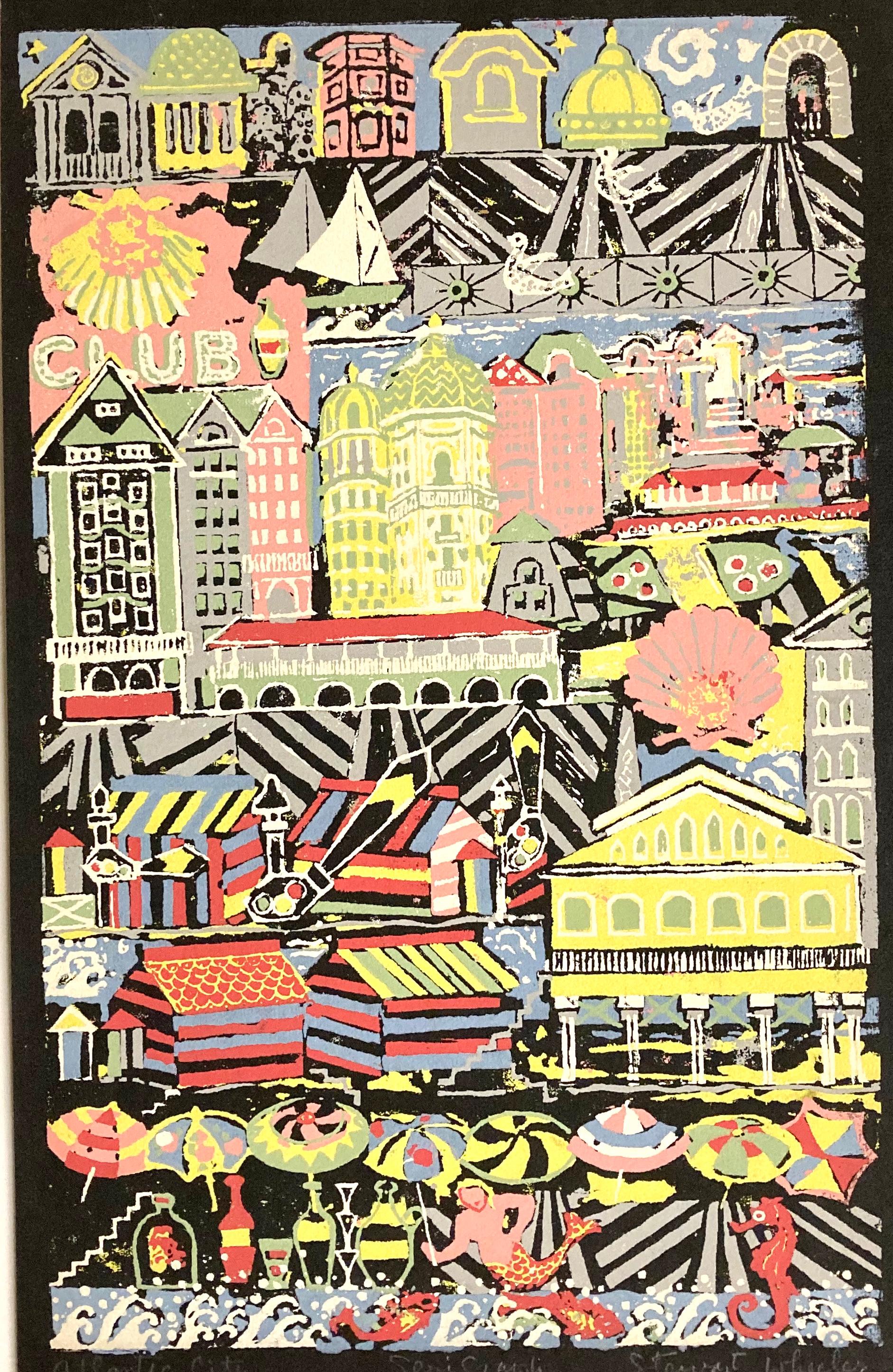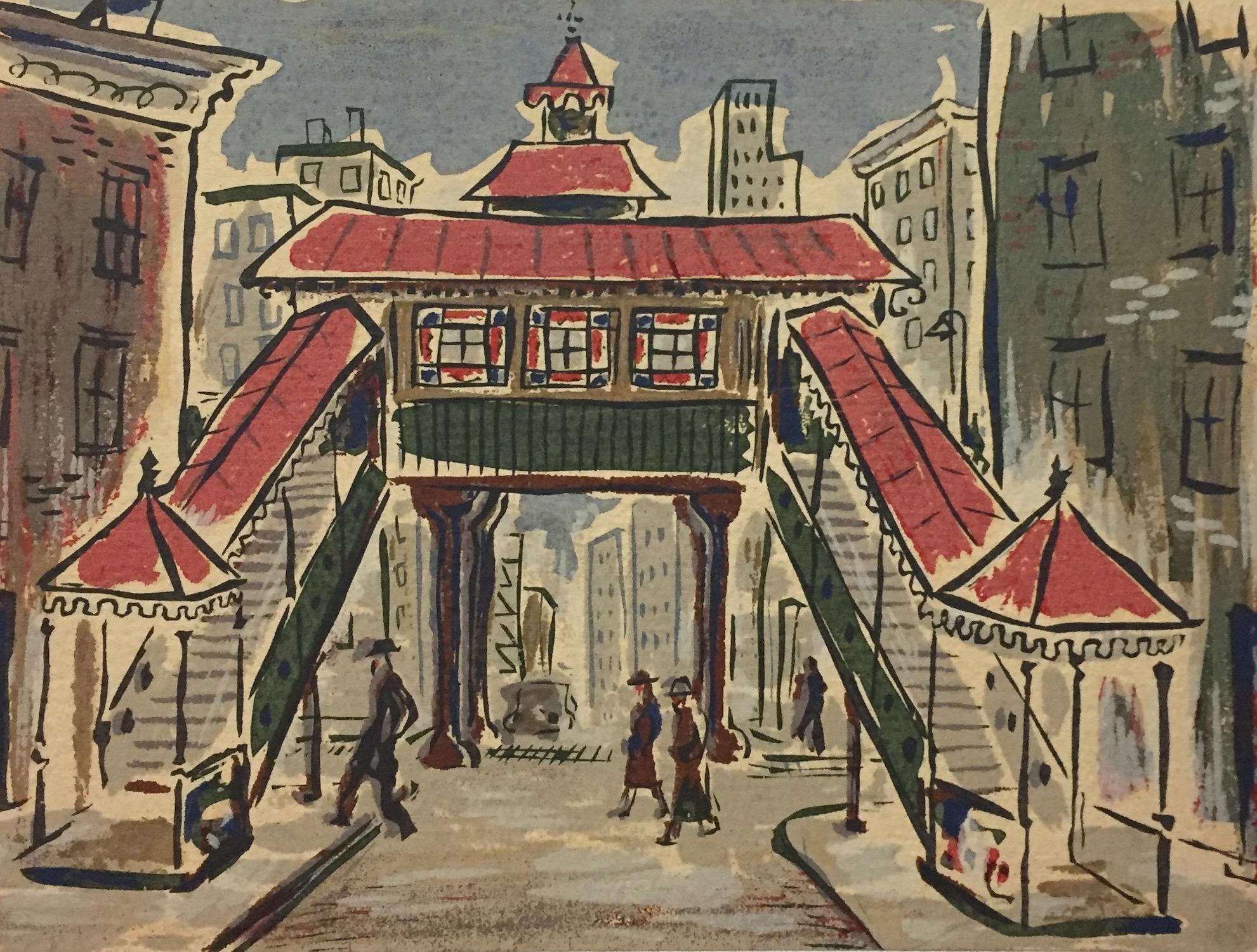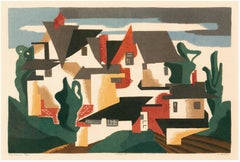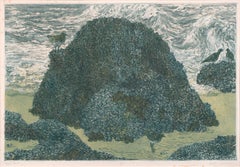
"Tidal Rocks, " Etching/Serigraph Print by Janet Turner, 1965
View Similar Items
1 of 7
Janet Turner"Tidal Rocks, " Etching/Serigraph Print by Janet Turner, 19651965
1965
About the Item
- Creator:Janet Turner (1914 - 1988)
- Creation Year:1965
- Dimensions:Height: 12 in (30.48 cm)Width: 17.75 in (45.09 cm)
- Medium:
- Movement & Style:
- Period:
- Condition:
- Gallery Location:Abilene, TX
- Reference Number:1stDibs: LU148029057102
You May Also Like
- "Skiing Near Holy Hill, " Original Silkscreen Landscape by Schomer LichtnerBy Schomer LichtnerLocated in Milwaukee, WI"Skiing Near Holy Hill" is an original silkscreen print by Schomer Lichtner. The artist initials are lower right, and the title is along the lower edge. This print depicts people skiing near Holy Hill, Wisconsin. The artist used a muted blue, a deep and dark purple, and accents of red to create this piece. 4 7/8" x 6 7/8" art 11 7/8" x 13 7/8" frame Milwaukee artist, Schomer Lichtner passed away on May 9, 2006 at the age of 101. He continued to amaze and create with his whimsical paintings of ballerinas and cows. He and his late wife Ruth Grotenrath, both well-known Wisconsin artists, began their prolific careers as muralists for WPA projects, primarily post offices. Schomer Lichtner was well known for his whimsical cows and ballerinas, such as his "Ballerina Dancing on Cow" sculpture below. The late James Auer, art critic for the Milwaukee Journal Sentinel referred to Lichtner as the artist laureate of Milwaukee, Wisconsin. He was the official artist of the Milwaukee Ballet. Lichtner also painted murals for industry and private clients. Schomer was a printmaker and produced block prints, lithographs, and serigraph prints. His casein (paint made from dairy products) and acrylic paintings are of the rural Wisconsin landscape and farm animals. He became interested in cows when he and Ruth spent summers near Holy Hill in Washington County. According to David Gordon, director of the Milwaukee Art Museum, Schomer Lichtner had a tremendous joie de vivre, " joy of life," and expressed it in his art. Schomer Lichtner was nationally known for his whimsical paintings and sculptures of black- and white-patterned Holstein cows and elegant ballerina dancers. Lichtner also painted all sorts of combinations of beautiful women, flowers and country landscapes. James Auer, former Milwaukee Journal Sentinel art critic, said that his art eventually "exploded into expressionistic design elements with bold, flat areas of color and high energy that anticipated Pop Art." Auer went on to describe Lichtner’s work as full of "wit, vigor and virtuosity." As early as 1930, Lichtner’s work was shown at the prestigious Carnegie International Exhibition in New York and at museums throughout the Midwest. As a student, he was a protégé of another icon of 20th century American art, Gustave Moeller...Category
1940s American Modern Landscape Prints
MaterialsScreen
- 'The French Farm' — Mid-Century ModernismBy Edward August LandonLocated in Myrtle Beach, SCEdward Landon, 'The French Farm', color serigraph, 1942, Ryan 86. Signed, titled, and annotated 'Edition 50' in pencil. A superb impression, with fresh colors, on cream, wove paper; ...Category
Mid-20th Century American Modern Landscape Prints
MaterialsScreen
- PlayBy Jacob LawrenceLocated in Long Island City, NYThis print is based on the fourth image from The Life of Harriet Tubman series (1940). Play Jacob Lawrence, American (1917–2000) Date: 1999 Screenprint, signed, dated, titled and nu...Category
1990s American Modern Landscape Prints
MaterialsScreen
$16,000 - Modernist Silkscreen Screenprint 'El Station, Interior' NYC Subway, WPA ArtistBy Anthony VelonisLocated in Surfside, FLscreenprint printed in color ink on wove paper. New York City subway station interior. Anthony Velonis (1911 – 1997) was an American painter and designer born in New York City who helped introduce the public to silkscreen printing in the early 20th century. While employed under the federal Works Progress Administration, WPA during the Great Depression, Velonis brought the use of silkscreen printing as a fine art form, referred to as the "serigraph," into the mainstream. By his own request, he was not publicly credited for coining the term. He experimented and mastered techniques to print on a wide variety of materials, such as glass, plastics, and metal, thereby expanding the field. In the mid to late 20th century, the silkscreen technique became popular among other artists such as Robert Rauschenberg and Andy Warhol. Velonis was born into a relatively poor background of a Greek immigrant family and grew up in the tenements of New York City. Early on, he took creative inspiration from figures in his life such as his grandfather, an immigrant from the mountains in Greece, who was "an ecclesiastical painter, on Byzantine style." Velonis attended James Monroe High School in The Bronx, where he took on minor artistic roles such as the illustration of his high school yearbook. He eventually received a scholarship to the NYU College of Fine Arts, into which he was both surprised and ecstatic to have been admitted. Around this time he took to painting, watercolor, and sculpture, as well as various other art forms, hoping to find a niche that fit. He attended NYU until 1929, when the Great Depression started in the United States after the stock market crash. Around the year 1932, Velonis became interested in silk screen, together with fellow artist Fritz Brosius, and decided to investigate the practice. Working in his brother's sign shop, Velonis was able to master the silkscreen process. He reminisced in an interview three decades later that doing so was "plenty of fun," and that a lot of technology can be discovered through hard work, more so if it is worked on "little by little." Velonis was hired by Mayor LaGuardia in 1934 to promote the work of New York's city government via posters publicizing city projects. One such project required him to go on a commercial fishing trip to locations including New Bedford and Nantucket for a fortnight, where he primarily took photographs and notes, and made sketches. Afterward, for a period of roughly six months, he was occupied with creating paintings from these records. During this trip, Velonis developed true respect and affinity for the fishermen with whom he traveled, "the relatively uneducated person," in his words. Following this, Velonis began work with the Public Works of Art Project (PWAP), an offshoot of the Civil Works Administration (CWA), where he was assigned to serve the different city departments of New York. After the formation of the federal Works Progress Administration, which hired artists and sponsored projects in the arts, he also worked in theater. Velonis began working for the federal WPA in 1935. He kept this position until 1936 or 1938, at which point he began working in the graphic art division of the Federal Art Project, which he ultimately led. Under various elements of the WPA program, many young artists, writers and actors gained employment that helped them survive during the Depression, as well as contributing works that created an artistic legacy for the country. When interviewed in December 1994 by the Library of Congress about his time in the WPA, Velonis reflected that he had greatly enjoyed that period, saying that he liked the "excitement" and "meeting all the other artists with different points of view." He also said in a later interview that "the contact and the dialogue with all those artists and the work that took place was just invaluable." Among the young artists he hired was Edmond Casarella, who later developed an innovative technique using layered cardboard for woodcuts. Velonis introduced silkscreen printing to the Poster Division of the WPA. As he recalled in a 1965 interview: "I suggested that the Poster division would be a lot more productive and useful if they had an auxiliary screen printing project that worked along with them. And apparently this was very favorably received..." As a member of the Federal Art Project, a subdivision of the WPA, Velonis later approached the Public Use of Arts Committee (PUAC) for help in "propagandizing for art in the parks, in the subways, et cetera." Since the Federal Art Project could not be "self-promoting," an outside organization was required to advertise their art more extensively. During his employment with the Federal Art Project, Velonis created nine silkscreen posters for the federal government. Around 1937-1939 Velonis wrote a pamphlet titled "Technical Problems of the Artist: Technique of the Silkscreen Process," which was distributed to art centers run by the WPA around the country. It was considered very influential in encouraging artists to try this relatively inexpensive technique and stimulated printmaking across the country. In 1939, Velonis founded the Creative Printmakers Group, along with three others, including Hyman Warsager. They printed both their own works and those of other artists in their facility. This was considered the most important silkscreen shop of the period. The next year, Velonis founded the National Serigraph Society. It started out with relatively small commercial projects, such as "rather fancy" Christmas cards that were sold to many of the upscale Fifth Avenue shops...Category
1980s American Modern Figurative Prints
MaterialsScreen
- Skiing IIBy Harry SchaareLocated in Long Island City, NYSkiing II Harry Schaare, American (1922–2008) Date: 1979 Screenprint, signed and numbered in pencil Edition of 300, AP 50 Image Size: 20 x 24 inches Size: 26 in. x 30 in. (66.04 cm x...Category
1970s American Modern Landscape Prints
MaterialsScreen
- Roof ShadowsBy Chase ChenLocated in Paonia, CORoof Shadows shows a surreal landscape with a door leading into a forest of trees. A limited edition ( 321/350 ) serigraph signed in pencil by the artist. In very good condition. Paper size 30.25 x 42.50 image 25 x 37.50. Born into a family of doctors and growing up during the cultural revolution Chinese...Category
1980s American Modern Landscape Prints
MaterialsScreen
Recently Viewed
View AllMore Ways To Browse
Turner Sea
Chicos Vintage
Tidal Wave
Janet Turner Art
Janet Turner
Donald Shaw MacLaughlan On Sale
Donna Aldridge
Doug Danz
Mitsuo Shiraishi
Fiorella Diamantini On Sale
Michael Schofield On Sale
Lucien Seevagen On Sale
Quincaillerie Vintage
Peter Max Balboa Park
John Stoll On Sale
Joseph Feher
Le Ruisseau Dans La Clairiere
Roger Konig Prints
